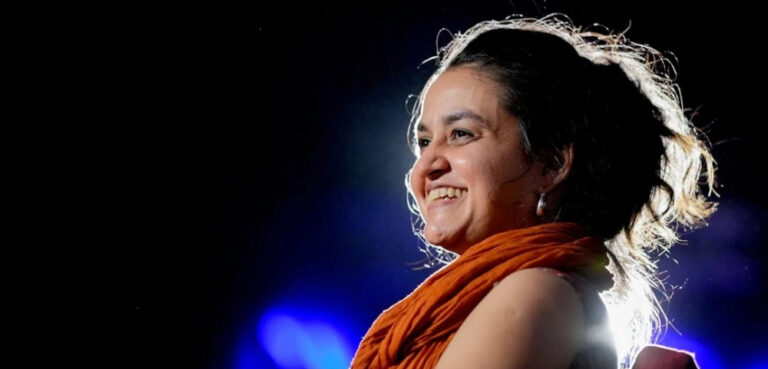
Another Day, Another CEO for the Powerhouse
By Kylie Winkworth
After an international search for the next CEO of the Museum of Applied Arts and Sciences (MAAS), the government has appointed Lisa Havilah, current director of Carriageworks.
Tasked with the controversial closure of the Powerhouse and establishment of the New Museum Western Sydney (NMWS), she will start at the museum in January.
Announcing the new CEO, Arts Minister Don Harwin lauded Havilah’s experience: “With eight years at Carriageworks, six years of experience at Campbelltown Arts Centre and six years at Casula Powerhouse Arts Centre, Lisa understands Western Sydney and [its] vibrant arts and culture.”
Havilah is highly regarded for her work at Carriageworks, combining an adventurous multi-arts program with commercial events, and growing visitor numbers and income.
The government’s plan is to recycle bits of the Powerhouse into a STEM or STEAM museum (science, technology, engineering, arts and mathematics), so that it can sell the museum’s Ultimo site.
Havilah is on record as a supporter of the Powerhouse’s sale to developers.
She will lead a senior management team at MAAS largely drawn from regional galleries, strong on contemporary art but short on science and collection experience.
The new executive will be the face of museum demolition, closing the Powerhouse, managing the end of Australia’s only museum of applied arts and sciences, handing the Powerhouse’s land and buildings to developers, moving the collection into inferior storage, and building a smaller less accessible museum on a flood prone riverbank.
The Parramatta community has said this is the wrong museum on the wrong site, but this scheme is not about meeting their cultural aspirations.
Parramatta will get what the government says it’s getting.
The government’s new pick for CEO will have to deliver all this with no increase in staff and ongoing cuts to the museum’s budget.
Perhaps this ugly set of challenges was a turn-off for applicants with museum experience, even with a salary package of more than $400,000.
Museum experts can see that the whole scheme is under-funded, under-resourced and missing grassroots community passion.
The Final Business Case papers released to the Legislative Council’s museum inquiry reveal an absurdly complicated set of interlocking projects.
First there’s the closure of the Powerhouse and removal of the museum’s massive collections which will be a high risk logistical and engineering nightmare, requiring parts of the building to be demolished.
Then there’s a big job emptying and rebuilding the stores at Castle Hill to take the 240,000 ex-Powerhouse objects from Ultimo.
The museum is already shopping its Very Large Objects (VLO) around to volunteer museums to see if they have a spare shed for a VLO, because there’s no room for these objects at Castle Hill.
This part of the collection move was not costed in the project budget.
Few of these objects will be displayed in the smaller NMWS, which will not have the Powerhouse’s grand volumes.
Then there’s the design and construction of the NMWS, and the research and design of the STEAM exhibitions.
And if the CEO has any time left, there is work on the ‘Ultimo Presence’ and the mooted fashion and design display at the bottom of a residential tower on the Powerhouse site.
All of these complicated projects will be overseen by a government committee focussed on costs and lacking any museum skills.
Yes Virginia, it would be cheaper and simpler to keep the Powerhouse and build a new museum at Parramatta, ideally one that the community actually wants.
But the central aim of the government’s scheme was always about ‘releasing’ the museum’s land to developers.
Shipping the Powerhouse collections to Parramatta, Castle Hill and anywhere else is just a consequence of a developer-driven plan to get the Powerhouse’s Ultimo land.
The break-up of the museum’s historic collections is already underway.
The Powerhouse Museum took ten years to develop and team of more than 400 people.
The government promises, to the sound of hollow laughter from museum experts, the NMWS will open in 2023.
In 2015 Mike Baird declared that the NMWS would be open before the next election.
The whole project has always been long on spin and groundless promises.
Lisa Havilah will be the fourth director of MAAS in less than six years; an unprecedented turnover in the museum industry.
The latest Public Service Commission survey of MAAS employees reads like a vote of no confidence in the management.
Just 16% of the staff agrees that the museum is effectively managing change.
Only 19% think the museum’s senior leaders effectively lead and manage change.
And just 23% agree that the senior managers model the values of the museum.
We are all invested in the success of the new MAAS CEO.
After all, it is our museum.
It belongs to the people of NSW, not just Western Sydney.
Lisa Havilah will take charge of one of Australia’s most significant collections, endowed by generations of donors over nearly 135 years.
Let’s hope she can keep it together.
Having driven the museum into the ground with cuts and controversy, the government could give her a fair chance of success by restoring the museum’s budget and staff numbers.









